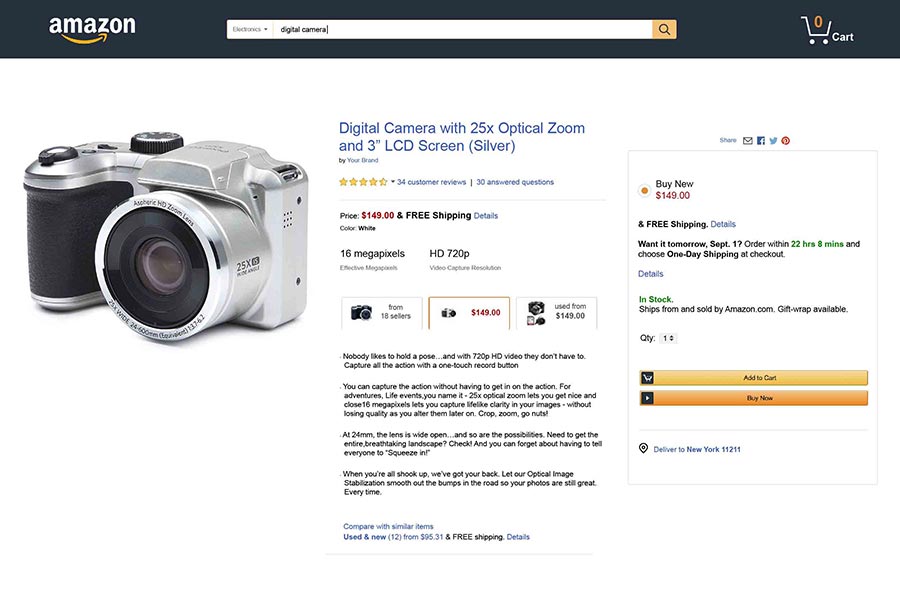What is Amazon FBA ?
You sell it, we ship it, that’s Amazon FBA’s mantra. Amazon has one of the most advanced fulfilment networks in the world. With Fulfilment by Amazon (FBA), you store your products in Amazon’s fulfilment centres, and Amazon picks, packs, ships, and provides customer service for these products. FBA can help you scale your business and reach more customers. Anyone enrolled in Amazon FBA can let Amazon handle all shipping, including returns and refunds, as well as product warehousing in Amazon’s warehouses, picking and packing, and more. Sellers send their products to Amazon, who warehouses everything and then processes all of the orders as they come in. As long as you handle the sales and make sure Amazon stays stocked with your products, the rest is done for you.
How do you get set up?
In order to set up on the FBA platform there are few things you need :
- Business mail address or Amazon customer account.
- Chargeable credit card (international cards are also accepted).
- Valid passport or ID. Identity verification protects sellers and customers.
- Company registration details, including VAT number.
To sell a product on Amazon, you must first create a product listing. Either match an existing listing (if somebody else is already selling the same product on Amazon), or create a new listing (if you are the first or only selling partner).

The specific way selling partners upload and list their products varies depending on their selling plan. There are two types of selling platforms selling partners using a Professional selling partner account have the option of listing their products in large batches using bulk uploading or inventory management with third-party systems, while Individual selling partners list products one at a time.
The Individual plan costs 75p per sale while sellers using the Professional plan pay £25 per month, no matter how many items they sell. If you sell more than 35 items per month, the Professional plan makes more sense. Plans can be changed at any time. Note that in both cases, additional selling fees apply to the flat rates.
Individual plan:
This plan might be right for you if:
- You sell fewer than 35 items a month.
- You don’t need advanced selling tools or programs.
- You’re still deciding what to sell.
Professional plan:
This plan might be right for you if:
- You sell more than 35 items a month.
- You want access to APIs and more selling reports.
- You want to sell with programs like Launchpad or Handmade.
In most cases, products must have a Global Trade Item Number (GTIN), such as a UPC, an ISBN, or an EAN. Amazon uses these product IDs to identify the exact item you’re selling. If you match a listing, you won’t need to provide a product ID since it already exists. If you’re adding a product that’s new to Amazon, you may need to purchase a UPC code or request an exemption.
In addition to a product ID, here’s some of the important information that goes into each product listing:
- SKU.
- Product title.
- Product description and bullet points.
- Product images.
- Search terms and relevant keywords.
A product detail page is where customers view a product sold on Amazon. If you’ve shopped on Amazon, you’ll probably recognise the product detail page. It’s where customers can find all the relevant information about a particular item. Below is an example of a product detail page:

When multiple selling partners offer the same product, Amazon combines data from all the offers into one product detail page (so we can present customers with the best experience). You can propose product information on a product detail page, along with other selling partners and manufacturers, and request detail page reviews if you think the information is not correct.
As you’re building your product detail pages, try to think about what will best help customers find your products, discover answers to their questions, and make a purchasing decision. Aim for the ultimate customer experience by making your listings concise, accurate, and easy to understand.
How does Amazon FBA make money?
The main ways that amazon makes their money is through fees charged for different parts of the FBA process. The main outline of feeds are…
1- fulfilment fees (order handling, pick and pack and weight handling)
2- inventory storage fees (charged monthly and also long term fees can apply after 180 days)
3- optional services( labeling, preparing products and disposal)
What are the benefits of FBA?
- Effortless Shipping and Logistics: Amazon does all the work for you. You just keep track of your listings, make sure they’re stocked on product, and let the fulfillment be taken care of from start to finish. For a small fee, you get a big weight off your shoulders.
- Discounted Shipping Rates: Because you’re working with Amazon, a global fulfillment giant, you’re also going to spend less on your shipping costs through the FBA platform. Therefore, even though you’re paying fees, they may be lower than you think when you factor in the shipping savings, and still cheaper than managing your own shipping and fulfillment in-house.
- Return Management: In addition to sales, FBA also handles returns and refunds because they are considered part of the fulfillment process. This takes one more thing off your plate.
- Customer Service Management: Amazon offers their own customer service for FBA sellers. You can also use their FBA platform to take care of your own customer service needs, routing all of your service through one platform for easy management.
- Quick Delivery: Products in FBA automatically get the Prime badge and are eligible from Prime free shipping (to the customer) and shipping times. Plus, you aren’t going to have to pay or charge premium shipping rates to do that, because it’s included with the service.
- More Storage Space: Without FBA, how much inventory could you realistically store? Do you have a warehouse or means to rent one? Are you capable of moving and managing inventory on that scale? This is where the Fulfillment by Amazon program really wins. You essentially have access to unlimited storage space – for a cost – because Amazon has warehouses all over the country that can hold a lot of goods.
- Omnichannel Fulfillment: Not only does FBA allow you to sell to targeted customers through the Amazon platform, but you will also have access to new multi-channel fulfillment solutions. The MCF service (or Amazon Multi-Channel Fulfillment) allows you to sell your products on various platforms and channels (such as BigCommerce and eBay) while still having Amazon fulfill them.



